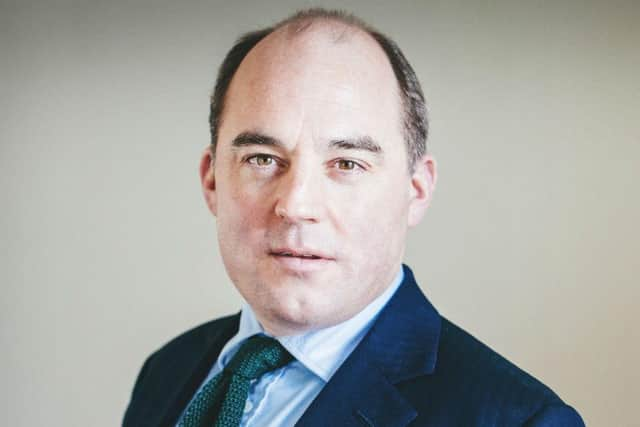Ukraine: NATO chiefs meet for top-level nuclear talks as Putin threat grows
Defence ministers led the session, which usually happens once or twice a year, at NATO headquarters in Brussels.
It was staged as concerns deepen over President Vladimir Putin’s insistence that he will use any means necessary to defend Russian territory.
Advertisement
Hide AdAdvertisement
Hide AdIt comes against a backdrop of high tension as some NATO allies, led by the US, supply Ukraine with advanced weapons and munitions to defend itself against Russian aerial attacks.


NATO is keeping a wary eye on Russia’s movements, but has so far seen no change in its nuclear posture.
But additional uncertainty comes from the fact that Russia is also due to hold its own nuclear exercises soon.
“Russia will also be conducting its annual exercise, I think, the week after or just after the annual exercise,” Defence Secretary Ben Wallace told reporters. But “what we don’t want is to do things out of routine”.
“This is a routine exercise and it’s all about readiness,” Mr Wallace said, just as “NATO’s meeting is all about making sure we are ready for anything. I mean, that is the job of this alliance — to make sure that the 30 partners together are ready for what is thrown at us. And we have to continue to work at that”.
NATO’s exercise, dubbed “Steadfast Noon”, is held around the same time every year and runs for about one week. It involves fighter jets capable of carrying nuclear warheads, but does not involve any live bombs. Conventional jets, and surveillance and refuelling aircraft also routinely take part.
Fourteen member countries will be involved in the exercise, which was planned before Russia invaded Ukraine on February 24. The main part of the manoeuvres will be held more than 1,000km (625 miles) from Russia.
NATO does not possess any weapons with nuclear weapons nominally linked to the alliance controlled by the US, the UK and France. France insists on maintaining its nuclear independence and does not take part in the meetings.
Advertisement
Hide AdAdvertisement
Hide AdEarlier this week, NATO secretary-general Jens Stoltenberg warned that it “would be absolutely the wrong signal to send” if the world’s biggest security organisation were to cancel the manoeuvres.
“NATO’s firm, predictable behaviour, our military strength, is the best way to prevent escalation,” Mr Stoltenberg said.
“If we now created the grounds for any misunderstandings, miscalculations in Moscow about our willingness to protect and defend all allies, we would increase the risk of escalation.”
With the Russian army retreating under the blows of Ukrainian forces armed with Western weapons, Mr Putin raised the stakes by annexing four Ukrainian regions and declaring a partial mobilisation of up to 300,000 reservists to buttress the crumbling front line.
As his war plans have gone awry, Mr Putin has repeatedly signalled that he could resort to nuclear weapons to protect the Russian gains. The threat is also aimed at deterring NATO nations from sending more sophisticated weapons to Ukraine.
Mr Stoltenberg described Mr Putin’s spiralling nuclear rhetoric as “dangerous and reckless”, and underlined that the allies “have also conveyed clearly to Russia that it will have severe consequences if they use nuclear weapons in any way.”
Comments
Want to join the conversation? Please or to comment on this article.